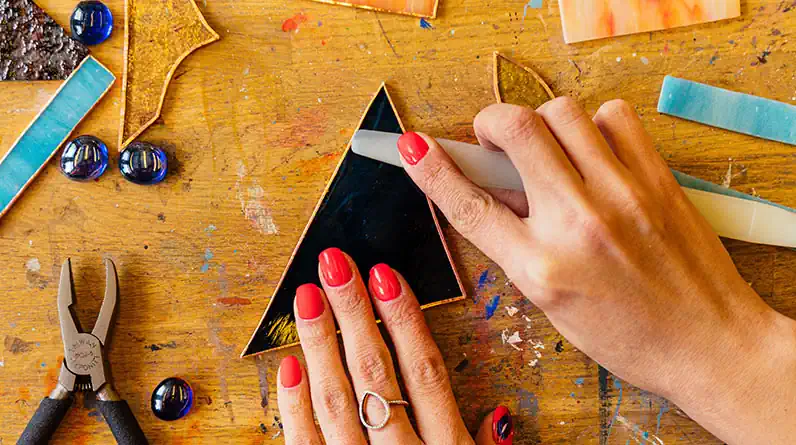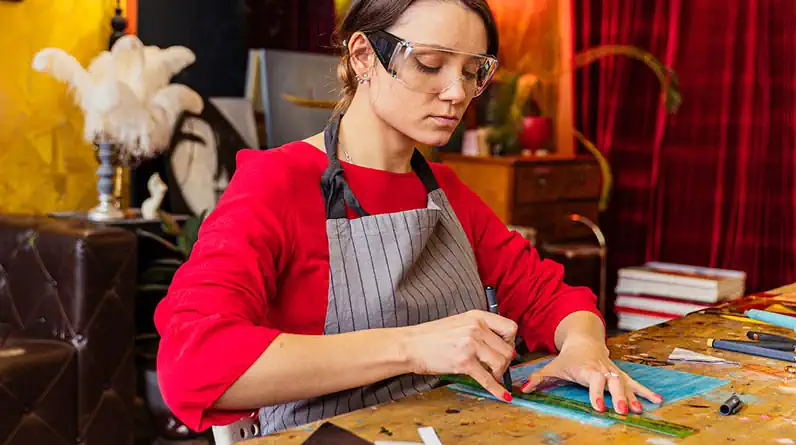
Scoring and Breaking Stained Glass
Whether you are a beginner or an expert, Stained Glass Scoring and Breaking is an art in its own right. It takes time, effort, and skill to produce an intricate piece. But it is also a fun challenge for anyone who is interested in learning more about it. Whether you want to break a piece to make a sculpture or you’re looking for a new hobby, there are several different ways you can get started.
The Right Tools
Getting the right tools and using them properly is the key to scoring and breaking glass. There are various techniques to break and score glass, and knowing which one is best for your project is essential. Using the right tools and the right techniques will make the job easier.
The best way to do this is by learning about the different types of glass, what each is used for, and the advantages and disadvantages of each. Once you have an understanding of how glass is made, you will be on your way to creating your own masterpiece.
It is also important to note that not all glass is created equal. For example, glass with a very high percentage of lead in it will not be suitable for use in stained glass. It is also worth noting that glass that is tempered will not break as easily as untempered glass.
The most important part of the process is the use of the tool, and knowing when and where to apply pressure. Using the wrong tool for the job can result in glass cracking or pieces of glass falling into your hands.
Getting Started
There are a few important things to remember when cutting and breaking glass. These techniques can make your work a little easier and more efficient.
Before you start, you’ll want to make sure your work area is cleaned up. This will help you avoid accidentally catching glass slivers with your hands and making bad breaks.
Once you have cleaned up your work area, you’ll want to use a pair of safety glasses to protect your eyes. This is especially important if you’re working with glass that has a tendency to break easily.
The first step is to draw a line along the panel you’ll be cutting. Once you have the measurements applied and have marked the lines, you’ll want to score the glass. Depending on the shape of the glass, your cut may vary from small and simple to very large and curvy. Naturally, you’ll need a good glass cutter. You can use a typical hand-held glass cutter to make straight lines, but you can also purchase specialty cutters for circles.
If you’re scoring curved sections, you’ll want to make shallow scores. Make sure the curves are gentle and don’t get too aggressive… at least until you become very skilled. Longer gentle curves will help you break it all the way across, and avoid breaking the glass where you don’t want it to break.
Another important tool for stained glass art is the running pliers. These tools are designed to make the scoring process quicker. They have a line on the head that’s meant to make it easier to apply downward pressure on the adjacent glass. They can also be used to make complete breaks.
Filling in the Gaps
The goal of glass cutting is to break the glass easily and without leaving large gaps. If you do make mistakes, you can often compensate for them by using solder.
Start by tracing the pattern on graph paper. Then, use a felt-tip pen to mark the pattern. You may also use a lightbox to help with positioning smaller pieces. This is the best way to make sure you have the correct size and shape.
Score the pattern onto the glass, then you can use a breaker or grozer plier to break the pieces. You can also snap them apart with your hands.
Next, you’ll want to use special copper foil to cover the glass edges with. Line up the edges of the pieces of glass with the copper foil and fold the copper strip around the glass edges. You will need to leave a slight space between the foil-wrapped pieces. You can also use a permanent marker to label each piece in order to easily keep track of positioning.
Safety Precautions
Using safety precautions when scoring and breaking stained glass is important for your health and safety. Lead dust is a health hazard, especially for pregnant women and children. It can stick to your hands, clothes, and even your eyes. The best way to protect your health is to wear safety glasses while working with glass.
The first thing you need to do is make sure that the surface you are working on is clean. Use a dustpan to keep your work area free of debris. This will help prevent you from picking up glass slivers with your hands.
You can use a wooden slat or cord to hold the glass in place, to protect you as well as the glass. Be careful not to let the glass bump into the edge of the table or the work surface, and again, you should always wear eye protection and gloves to avoid injury.







